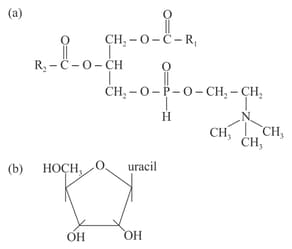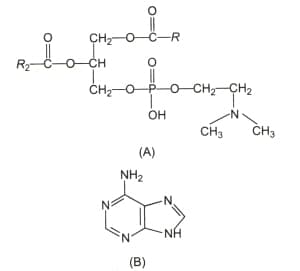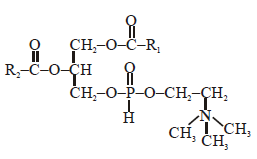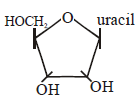In the brain, common types of lipids are
Important Questions on Biomolecules
| List-I | List-II | ||
| (A) | Glycerol | (I) | Phospholipid |
| (B) | Aromatic amino acid | (II) | Lower melting point |
| (C) | Lecithin | (III) | Trihydroxypropane |
| (D) | Gingelly oil | (IV) | Tryptophan |
Following are the statements with reference to 'lipids'.
(a) Lipids having only single bonds are called unsaturated fatty acids.
(b) Lecithin is a phospholipid.
(c) Trihydroxy propane is glycerol.
(d) Palmitic acid has carbon atoms including carboxyl carbon.
(e) Arachidonic acid has carbon atoms.
Choose the correct answer from the options given below.
Read the following statements on lipids and find out the correct set of statements:
(a) Lecithin found in the plasma membrane is a glycolipid.
(b) Saturated fatty acids possess one or more bonds.
(c) Gingelly oil has a lower melting point, and hence remains as oil in winter.
(d) Lipids are generally insoluble in water but soluble in some organic solvents.
(e) When a fatty acid is esterified with gIycerol, monoglycerides are formed.
Choose the correct answer from the options given below:



Rancidity of fats is
Which of the following maintains continuity between the water and lipid phases inside and outside the cells?
Identify the molecules (a) and (b) shown below, and select the right option giving their name and occurrence:
 (a)
(a)
 (b)
(b)

